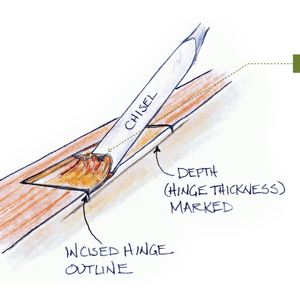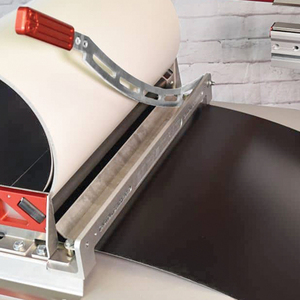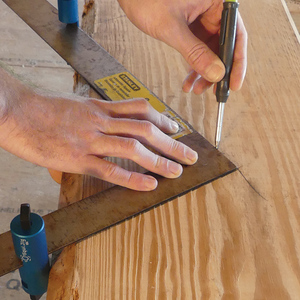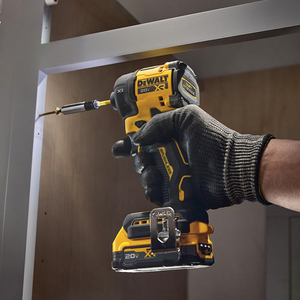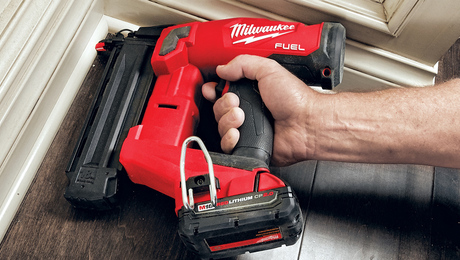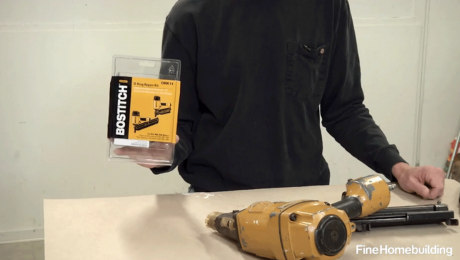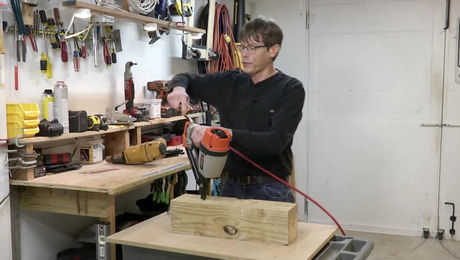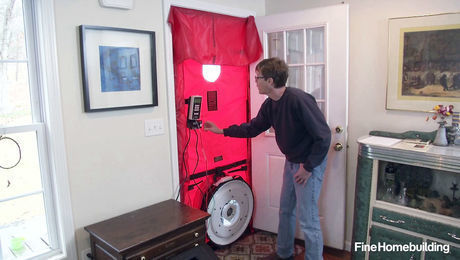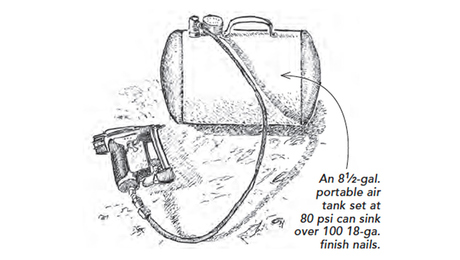The Science Behind Electric vs. Gas Leaf Blowers
Learn why electric alternatives to traditional lawn-care tools are growing in popularity.
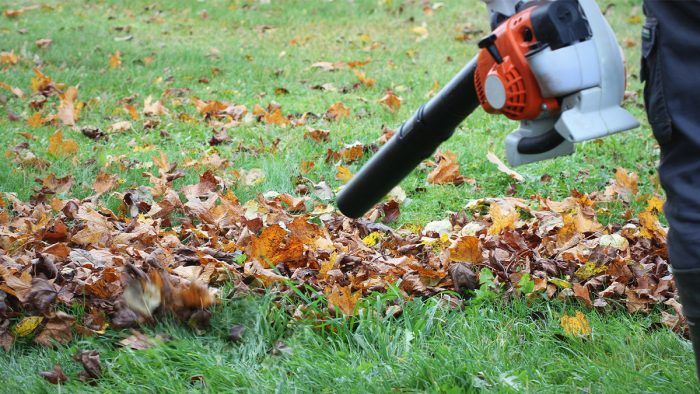
Over the past decade, there has been a steady rise in electric alternatives to traditional lawn care tools. Building science consultant Jon Harrod explains the differences between gas vs. electric leaf blowers, highlighting factors like air pollution, noise, health risks, and more. He also offers advice on sustainable lawn care practices like mulching and composting leaves.
Lawn Care Across Communities
I live in a hippie-ish college town in Upstate NY. We love our picturesque Victorian houses and stately shade trees, our front yard flower beds and backyard vegetable gardens. One thing we don’t seem to care much about is removing fallen leaves. Some, like myself, prefer to let them lie; a few of my more fastidious neighbors rake them into backyard compost piles or collect them in biodegradable bags for municipal pickup.
Lately, my work has taken me Downstate to the outskirts of New York City. In these communities, expectations are different, and professional lawn care is big business. On any weekday, it’s almost guaranteed that a team of landscapers will show up at the house where I’m working or at one of the adjoining properties. Even in mid-December, weeks after most trees are bare, the drone of leaf blowers can be heard up and down the block.
Leaf Blowers Are Deafening
The first thing one notices about leaf blowers is the noise. Gasoline-powered leaf blowers, the kind used by most professional landscapers, are loud. Sound intensity at the operator’s ear can exceed 100 dBA; without ear protection, even brief exposures can put users at risk for hearing loss. Fifty feet away, levels of 65-80 dBA can make it hard to carry on a conversation or concentrate.
The low-frequency sounds produced by gasoline blowers can travel long distances and propagate readily through walls and windows. A recent paper found that sound levels 800 feet from a gasoline blower can exceed World Health Organization guidelines.
Chronic exposure to elevated noise levels has been linked to irritability, sleep disturbances, and declines in psychological and cardiovascular health. Those at particular risk include children, elders, night-shift workers, and people with sensory processing disorders.
Two-Stroke Engines Are Noxious
The next thing one notices about a gasoline blower is usually the smell. Most use two-stroke engines, which are light and cheap to manufacture but produce far more pollution than the four-stroke engines used in lawnmowers. In four-stroke engines, only gasoline and air enter the combustion chamber; the oil that lubricates the piston is held in a separate sump. In two-stroke engines, the lubricating oil is mixed with the gasoline at around 50:1; 30% or more of this mix can exit the combustion chamber unburned.
The two-stroke engines in gasoline blowers also produce staggering levels of carbon monoxide, nitrogen oxides (NOx), volatile organic compounds like benzene, and particulates. A 2011 study by Edmunds found that a blower with a two-stroke engine produced far more pollution than a full-sized pickup truck. The authors write, “To equal the hydrocarbon emissions of about a half-hour of yard work with this two-stroke leaf blower, you’d have to drive a [Ford] Raptor for 3,887 miles, or the distance from Northern Texas to Anchorage, Alaska.”
These combustion by-products are linked to health problems, including cancers, asthma, and heart disease; they also contribute to smog formation. The 200+ mile-per-hour jets of air from blowers also stir up soil dust, which can contain mold spores, heavy metals, and animal feces. Additionally, leaf blowers are no longer restricted to leaf removal. Gasoline blowers have become a go-to tool for clearing grass clippings, light snow, and even trash.
Small Changes for a Greater Good
Concern over noise and health effects have led more than 100 U.S. jurisdictions to restrict gasoline blowers. Ordinances have taken several forms. Some, like Charlestown, SC, have chosen to lead by example, prohibiting the use of gasoline blowers by city crews.
Others, like Evanston, IL, and Westport, CT, have limited the seasons that gasoline blowers can be used. The Village of Southampton, NY, initially regulated hours, days of the week, and seasons of use, transitioning in October 2024 to a complete ban on gasoline blowers.
Some municipalities, along with utilities, electric cooperatives, and air quality management districts, offer incentives to replace gas-powered lawn equipment with electric models. Beginning in 2024, the State of California banned the sales of most gasoline-powered lawn equipment. The movement has encountered some push-back, with Georgia and Texas enacting laws limiting local governments’ power to restrict gas-powered equipment.
Electric Blowers
Electric blowers offer a quieter, less-polluting alternative. A 2018 research paper compared sound intensity for three gas and four electric blowers. Measured sound levels at 50 feet ranged from 67 to 77 dBA for the gasoline blowers and 57 to 67 for electric models.
Each ten-point increase in dBA corresponds to a rough doubling in perceived loudness. The quietest electric blower was about one-fourth as loud as the loudest gasoline model. The higher-frequency sounds of the electric models were more readily blocked by building assemblies so that indoor sound levels were between 5 and 19 dBA lower than those of gasoline blowers.
Replacing combustion with battery power also eliminates on-site combustion. Although fossil-fuel power plants still produce some carbon monoxide, NOx, and particulates, net emissions per hour of use are much lower for electric than gasoline equipment.
CO2 reductions will vary with the carbon intensity of the regional electric supply and will be higher in grids dominated by wind, solar, and hydropower. In grids that rely more heavily on coal and gas for electric generation, the savings will be smaller but still significant. I couldn’t find blower-specific data on CO2 savings, but estimates for other lawn equipment suggest reductions of 90-95%.
Electrified Equipment for the Landscape
The movement to restrict gasoline blowers is part of a larger trend toward electrification in the lawn care sector. Improvements in battery technology now allow electric lawnmowers, string trimmers, and other tools to offer performance comparable to gasoline counterparts. According to the Outdoor Power Equipment Institute, a trade group representing manufacturers and suppliers, electric equipment represents 63% of handheld powered lawn equipment sold in the U.S.
For walk-behind mowers, electric equipment sales increased from 11% in 2016 to 37% in 2021. Some landscaping companies have gone completely electric, successfully marketing their services to noise-sensitive and environmentally conscious customers. In Portland, OR, where gasoline blowers will be phased out by 2028, the nonprofit Clean Quiet PDX provides a directory of eco-friendly landscapers and identifies those that use only electric and manual tools.
Electric Blowers Are More Than Quiet
Electric lawn equipment offers benefits beyond quieter neighborhoods and cleaner air. It requires less maintenance and doesn’t expose users to the hazards of transporting, storing, and handling flammable fuels. While the upfront cost of electric equipment is often higher, the difference can be paid back in a few years with reduced fuel and maintenance costs.
The lithium-ion batteries that power cordless lawn equipment do have a significant environmental footprint. The extraction and refining of lithium and other component metals like cobalt and nickel consume large quantities of water, destroy habitat, and contaminate air, soil, and groundwater. Users can reduce these impacts by sharing batteries between multiple tools and by turning in worn-out batteries for recycling. Corded electric blowers, while less convenient, are also an option.
And blowers, gasoline or electric, still stir up significant amounts of dust. On this count, old-fashioned, human-powered rakes may provide a better alternative. While these might not be practical for commercial landscapers, they work well for homeowners, especially those clearing smaller lawns. They’re quiet, gentle on the soil, and offer light outdoor work that many folks find enjoyable.
Protect Soil Health and Biodiversity
As we contemplate greener alternatives to gasoline blowers, it’s worth asking whether we should be removing leaves at all. In natural woodlands, decaying leaves build organic matter and return nutrients to the soil. They slow runoff and protect soils from erosion.
Organic matter increases soils’ water-holding capacity, reducing flooding and increasing resistance to drought. The nutrients in leaf litter reduce the need for artificial fertilizers. Rather than a waste product, fallen leaves can be viewed as a resource that supports a healthy yard.
|
|
What to Do With Leaf Litter
But heavy leaf litter can also inhibit the growth of grass. One alternative to removing leaves is to mulch them with a mower. This chops the leaves finely so that they fall between the leaves of grass. It also allows them to decompose and release their stored nutrients more quickly. Another option is to compost leaves in piles on-site.
The finished compost can then be scattered across the lawn or used to improve garden plots and flower beds. In their guidelines for leaf composting, PennState Extension reports that “The leaves of one large shade tree can be worth as much as $50 of plant food and humus.”
Intact leaf litter provides habitat for insects, spiders, amphibians, and other small animals. These, in turn, support populations of birds and insect-pollinated plants. Leaving patches of undisturbed leaf litter under trees and around edges is an easy way to bring more biodiversity to one’s backyard.
Changing the way we handle fallen leaves—and lawn care in general—will require some deeper shifts in priorities. I suspect most people find the noise of gasoline blowers annoying but tolerate it as a necessary cost of maintaining a tidy and socially acceptable lawn.
Increasing awareness of their negative effects is helping move attitudes toward quieter, cleaner, and less thorough leaf removal. If we can learn to embrace a little more disorder, we’ll be rewarded with home environments that are healthier for humans and other living species.
The Human Benefit
This morning, I took a quick walk before sitting down to finish this article. An inch of snow had fallen overnight, forming a quieting blanket on the sidewalks and dormant yards. Then, a familiar but unwelcome growl emerged from behind the multifamily rental a few doors down as the property manager revved his gasoline blower to clear the driveway.
I felt my muscles tighten reflexively as I was reminded of the impact that even one of these machines can have on my normally quiet neighborhood. I hope that in a few years, gasoline blowers will be a thing of the past. For our ears, lungs, and ecosystems, the change can’t come soon enough.
— Jon Harrod; writer, HVAC project manager, and building science consultant based in Ithaca, N.Y. Article originally published on Green Building Advisor.
RELATED STORIES
Fine Homebuilding Recommended Products
Fine Homebuilding receives a commission for items purchased through links on this site, including Amazon Associates and other affiliate advertising programs.

Makita Top-Handle Jigsaw (4350FCt)

Milwaukee Cordless Tablesaw (2736)
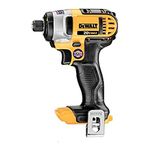
DEWALT Impact Driver (DCF885)


